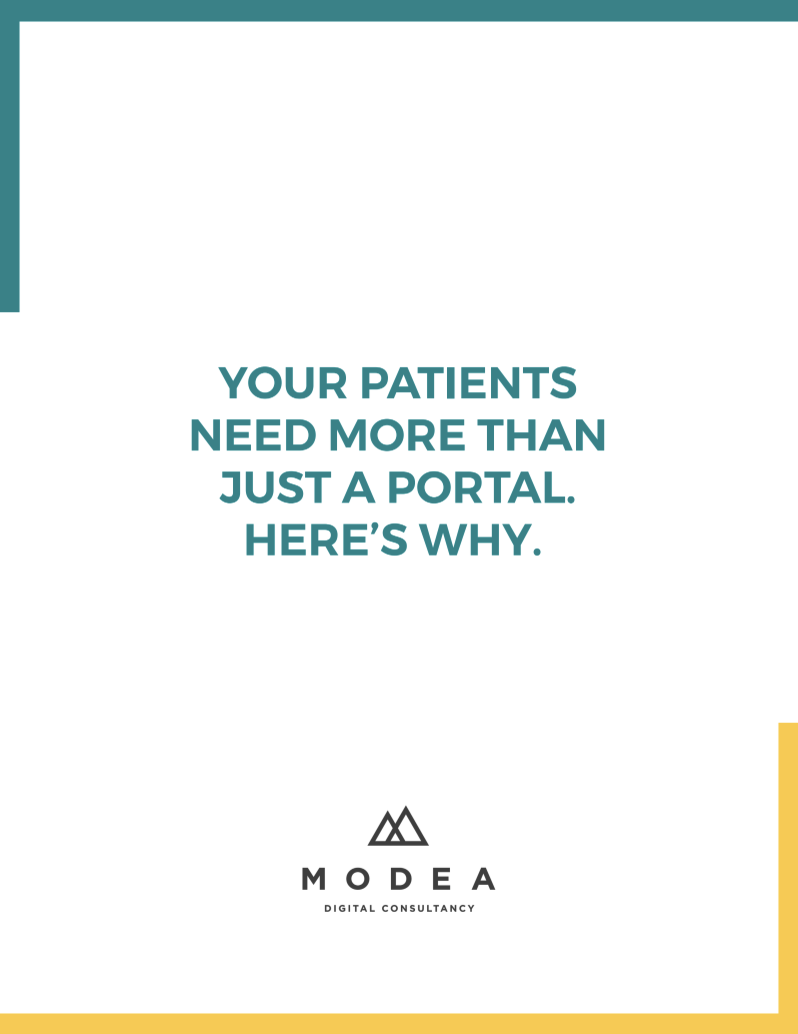
Healthcare provider organizations face the ongoing challenge of aligning digital and marketing efforts. Often, these functions operate in silos, leading to inconsistent messaging, fragmented user experiences, and missed opportunities to engage patients effectively. Developing a comprehensive product strategy, whether for your website, mobile app, or other digital tool, is a powerful way to dismantle barriers, foster collaboration, and drive a unified approach to digital initiatives.
The Impact of Silos on Engagement
In many healthcare organizations, digital and marketing teams are structurally and functionally separated. Take the health system website, for instance. Digital teams may be tasked with managing the technical aspects of the website, such as development and maintenance, while marketing teams may concentrate on campaigns, messaging, and brand. This division can result in:
- Inconsistent messaging, where patients receive conflicting or unclear information depending on the entry point.
- Fragmented experiences, with users struggling to navigate disjointed site structures or complete important actions like scheduling or finding care.
- Missed insights, as patient behavior is not tracked holistically across digital touchpoints.
- Inefficient resource use, with duplicated efforts, misaligned priorities, and unclear ownership.
Product Strategy as a Unifying Force
A digital (web or mobile) product strategy provides the structure and shared vision needed to align teams across departments. It acts as a single point of focus for how a healthcare organization’s digital presence should evolve, grounded in user needs, business goals, and platform capabilities.
Rather than treating investment in a digital tool as a series of isolated projects, a defined product strategy brings it all together – and ultimately leads to a better investment of time and resources. Product strategy blends audience research, content planning, technology architecture, and measurement into one coordinated approach. The process usually begins with research, including interviews with stakeholders, analysis of patient behavior, and evaluation of the competitive landscape. From there, teams identify core audiences and map key user flows that guide decisions around content, navigation, and functionality.
Technology plays a critical role in product strategy. A strong product strategy establishes how the platform will scale, how tools like EHRs or CRMs will integrate, and how to approach accessibility, compliance, and personalization. It ensures performance measurement and optimization are intentionally planned for from the start, with tools and strategies clearly outlined.
A thorough product strategy provides not just a plan for today’s needs, but a strong foundation for continuous improvement.
How to Develop a Unifying Web Product Strategy
The health system website is a tool for information, engagement, and brand-building. Creating an effective web product strategy requires intentional alignment, cross-functional collaboration, and structured planning. When teams do this well, they set the foundation for a digital presence that serves users and meets organizational goals. Healthcare organizations can take the following steps to build a strategy that delivers long-term impact:
- Assemble a cross-functional team including stakeholders from digital, marketing, IT, content, analytics, and patient experience. This ensures the strategy reflects diverse perspectives, uncovers operational dependencies early, and fosters buy-in across the organization.
- Bring in a product strategist to lead the effort, align stakeholders, and translate research and insights into a clear roadmap. The product strategist defines what to build, why it matters, and how to measure success while ensuring every decision supports both patient experience and organizational goals.
- Conduct comprehensive research to ground the strategy in evidence. This should include stakeholder interviews to surface business priorities and pain points, behavioral analysis to understand how users interact with current digital properties, and competitive benchmarking to identify gaps and opportunities in the market.
- Define clear objectives and target audiences by aligning business goals with user needs. This helps teams focus their efforts, prioritize features and content, and avoid one-size-fits-all solutions. Goals should be measurable and tied to outcomes that matter to both patients and the organization.
- Develop core strategic artifacts that serve as shared reference points across teams. These might include user personas, journey maps, content strategy frameworks, information architecture models, and measurement plans. These tools help maintain consistency, support scalability, and guide decisions throughout the lifecycle of the product.
- Establish governance and roadmap ownership to sustain momentum beyond initial planning. A clear governance model defines roles, responsibilities, and decision-making processes. Roadmap ownership ensures continued alignment, accountability, and iteration as needs evolve.
- Set a measurement strategy with a compliant analytics platform to track the return on your investment and identify opportunities for future optimization.
By following these steps, healthcare organizations can move beyond fragmented efforts and build a digital foundation that is cohesive, strategic, and scalable.
The Benefits of Defining a Product Strategy
A comprehensive product strategy is no longer optional for healthcare providers. It is essential. Aligning marketing, IT, digital, content, and analytics teams around shared goals, patient insights, and consistent design and content standards drives impact far beyond the product itself:
- A more consistent patient experience, with cohesive messaging and seamless navigation
- Clearer brand expression that reflects the organization’s tone, values, and mission
- Increased operational efficiency through reduced rework and better collaboration
- Smarter, faster decisions enabled by shared KPIs and actionable insights
- Greater patient engagement through more relevant and user-centered experiences
Having alignment improves not only the digital experience, but also the organization’s ability to deliver on its mission.
Get in touch with us if you’re thinkng about a product strategy for your organization.

